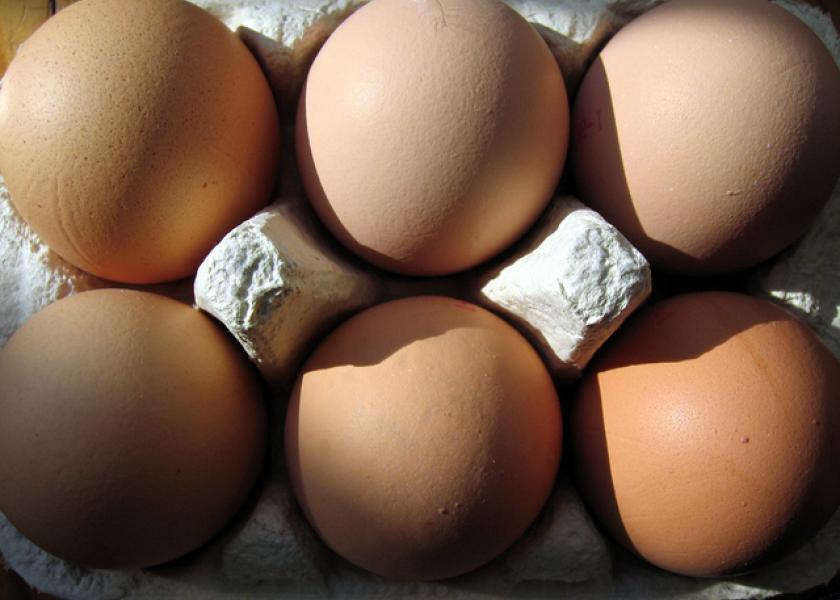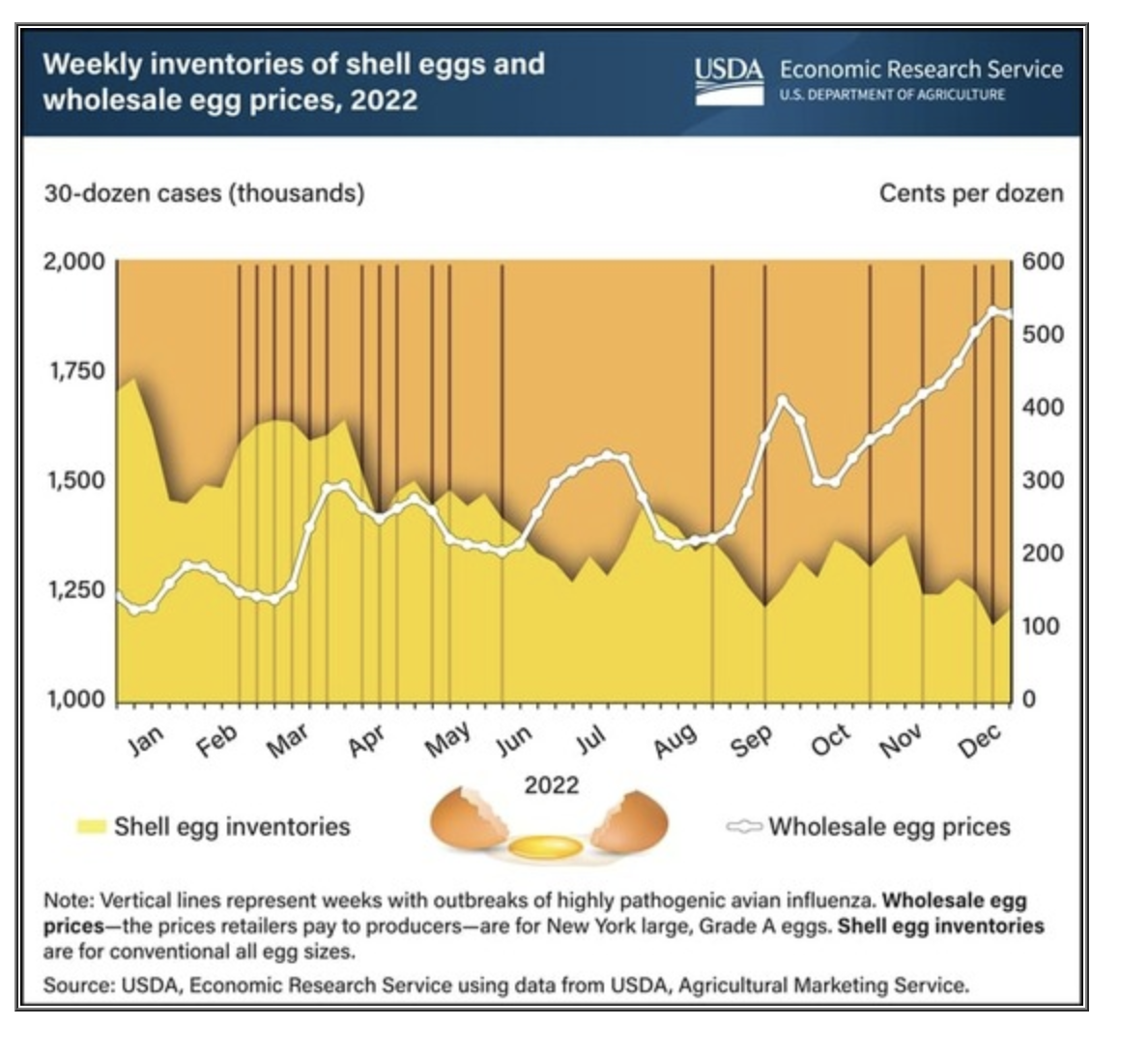Why Have Egg Prices Spiked 60% Since Last Year?

The Labor Department’s latest Consumer Price Index (CPI) showed annual inflation cooled in December, with food prices up 0.3%. And while some food costs are showing signs of improvement, the cost of staple ingredients like eggs, are seeing high price spikes year-over-year.
The consumer price index, which measures the cost of a wide array of goods and services, declined 0.1% month over month. The latest data beat forecasts, thanks to a drop in gasoline prices that offset other cost increases.
The annual inflation rate in the U.S. cooled for a sixth straight month to 6.5% in December. Farm Journal Washington Correspondent Jim Wiesemeyer points out that’s the lowest since October of 2021.
Looking at just food prices, that segment increased 0.3% in December. While goods like bacon, ham and beef saw year-over-year declines, items like eggs showed sticker shock. The CPI showed year-over-year:
- Egg prices are up 60% year-over-year
- Combined dairy product prices are up 15%
- Butter climbed 31%
- Margarine is 44% higher
- Canned vegetables increased 17%
- Lettuce climbed 25%
- Flour is 23% higher
Americans aren’t getting much relief from inflation at the grocery store.
Eggs 🍳 60% 🔺(YoY) ❗️
Butter 🧈 31%
Lettuce 🥬 25%
Flour 🌾23%
Hot dogs 🌭 18%
Coffee ☕️ 16%
Ice cream 🍨 15%
Chicken 🍗 11% pic.twitter.com/H6mKQ9Swfk — David L. Ortega (@dlortega) January 12, 2023
If you've been to the store lately, the price of eggs may have shocked you. So, why the big jump in the price you’re now paying for eggs? Jayson Lusk, head of the Department of Agricultural Economics at Purdue University, says the answer is simple: highly pathogenic avian influenza (HPAI), otherwise known as bird flu.
“We've had a significant reduction in supply from depopulation this spring and again in the fall and winter,” Lusk told Farm Journal. “Couple that with inelastic demand for eggs, and you get the price spikes we're seeing.”
Lusk says higher feed and energy costs don’t help the equation either, but he says the impact avian flu had on our nation’s laying flock is significant.
“If I take the total number of egg laying hens that were hit by bird flu in 2022, it's about 11% of the total 2021 inventory numbers,” says Lusk. “Of course some producers have been able to expand a bit as others have been hit, so overall production is running about 6% to 7% lower than last year.”

USDA says U.S. egg inventories were 29% lower in the final week of December 2022 when compared to the beginning of the year. And the agency says 43 million egg-laying hens were impacted by the disease since the start of the outbreak in February 2022. Those losses were either from birds being directly hit with the disease, or producers forced to depopulate to get the disease under control.
"Losses were spread across two waves: from February to June (30.7 million hens) and from September to December (12.6 million hens)," USDA reports. " On constrained supplies, wholesale egg prices (the prices retailers pay to producers) were elevated throughout the year. The HPAI recurrences in the fall further constrained egg inventories that had not recovered from the spring wave."
USDA points out the latest wave occurred as holiday season demand stemming from more baking picked up.
"The average shell-egg price was 267 percent higher during the week leading up to Christmas than at the beginning of the year and 210 percent higher than the same time a year earlier," says USDA.
USDA does expect wholesale egg prices to decline. USDA says during the last week of 2022, as flocks started to recovery, wholesale egg prices started to fall.
There was some good news in the month-to-month comparison in food prices. Eggs jumped 11% from November to December, but poultry prices dropped 0.6%. Milk prices declined 0.1%. The price shoppers paid for oranges dropped 7%. Ham prices declined 6%.
Overall, food at home prices are up 10.4% year over year, but 0.3% from November to December. Food away from home, which includes eating out at restaurants, is up 8.3% in a year and 0.4% when compared to a month earlier.







